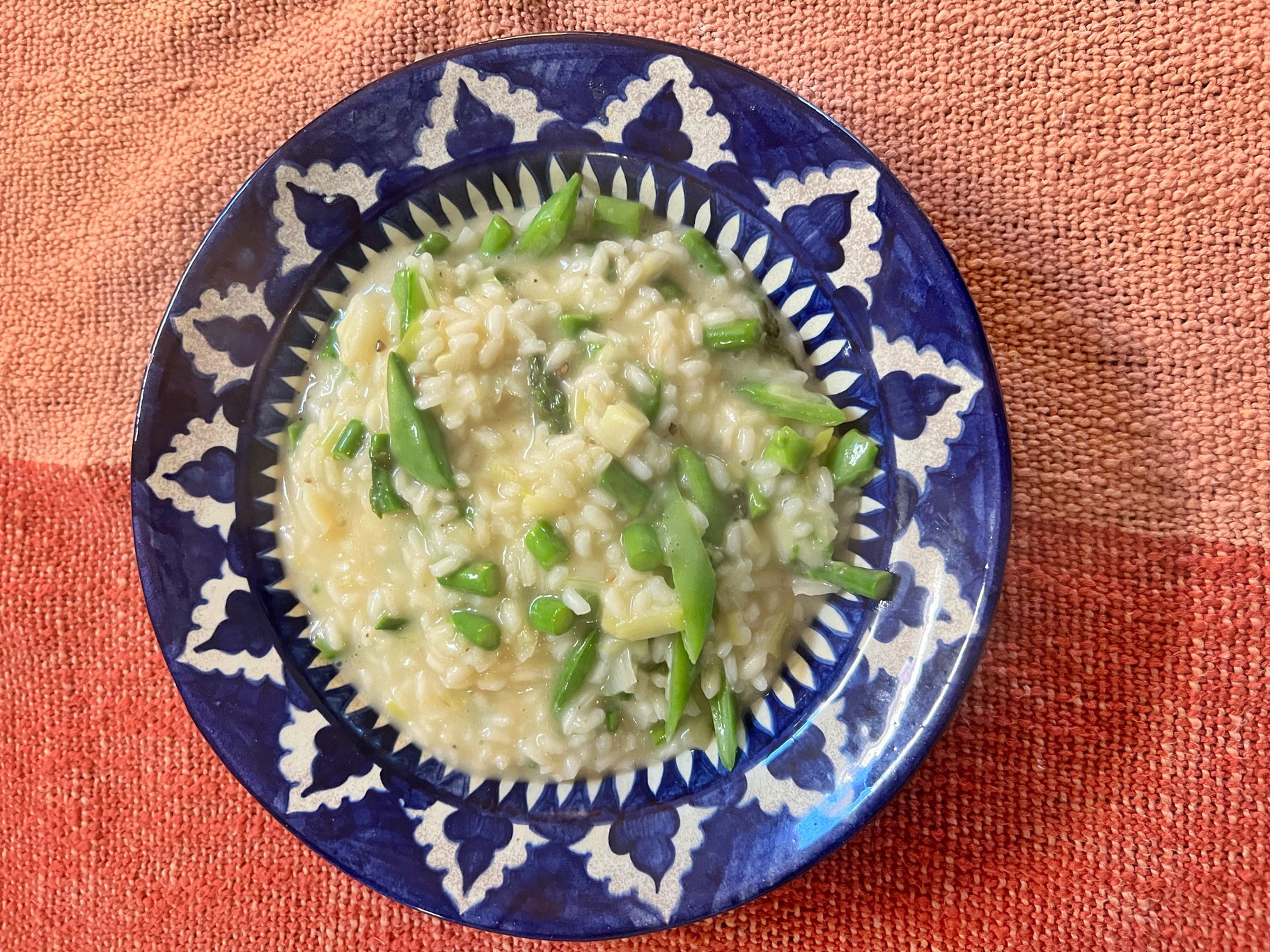Making risotto isn’t a mystery and doesn’t require any special talent except that of attention. This unique rice dish that originated in Northern Italy relies on special varieties of rice grown there. Vialone Nano, Arborio, and Carnaroli (from small to large) have a high starch content that allows the grains of rice to swell yet maintain their integrity. I prefer Carnaroli. The result is a porridge-like dish that is creamy but not mushy due to the still intact rice grains.
The preparation of risotto involves beginning with sautèing onion in butter or oil, adding the rice and letting it absorb some of the fat, then slowly cooking it in water or broth, adding small amounts of liquid at a time while stirring constantly, until the rice is tender yet still has integrity, and the liquid has been absorbed. The dish is traditionally finished with a knob of butter and a small handful of parmigiano reggiano, which are beaten into the rice off the heat which adds richness, flavor, and reinforces the creamy texture. There is no cream in risotto. It can be flavored with a variety of ingredients, including most vegetables, seafood or sauces like pesto or a great tomato sauce.
In celebration of spring, I have two “risotti” for you, one made with the triad of spring vegetables, asparagus, leeks and peas, and another which is a bit of a curve ball, made with strawberries. Strawberries make a wonderful risotto you can serve as a main course for lunch or as a dessert. It’s like a more luxurious rice pudding. If you think about the flavor profile of a strawberry, it has a lot in common with tomatoes. Both are a balance of sweet and tart.
While it is true that you can make a risotto in an Instant Pot or in the oven, and on the stove by adding all the liquid at once, the classic method of adding liquid in several additions while stirring frequently only takes about 25 minutes from start to finish. I’ve made it all of these ways, but I enjoy watching the transformation of the rice in the pot as it cooks over low heat bathed in several small additions of liquid along the way. At about 18 minutes of cooking, the magic happens as the rice gives up its starch which merges with the other ingredients, the “condimenti,” to create that lovely texture for which risotto is known.
When you make risotto in this classic manner, you barely need a recipe. You can riff depending on the ingredients you have and the number of people you’re cooking for. Since you’re looking at the texture of the dish to tell you when it’s done, you can make it for two or 200 (which I’ve done several times) without measuring.

Springtime vegetables of asparagus, sugar snap peas, and leeks combine with Carnaroli rice for a lovely dish of risotto. Photo by Evan Kleiman.
There is a template for making a risotto.
-Heat the water or broth in a pot to keep it warm. (Although strictly speaking you can make it using broth from the fridge or tap water it will take a little longer.)
-Sautè chopped onion in melted butter or oil until they are soft and translucent.
-Add rice to the pan and stir it until it’s coated with fat, and you can hear the grains click against the pot.
-Start adding the warm liquid of your choice to the rice about half a cup at a time, stirring constantly until the liquid is absorbed before the next addition.
-Add whatever additions will flavor the risotto about half way through keeping in mind how long they will take to cook.
-Continue to add liquid and stir until the rice is at the point of doneness you prefer. I like it al dente, just at the point where a tiny speck of white at the center of the kernel is still there when I remove it from the pan.
-Take the pan off the heat and beat in the butter and parmigiano until it’s fully incorporated.
